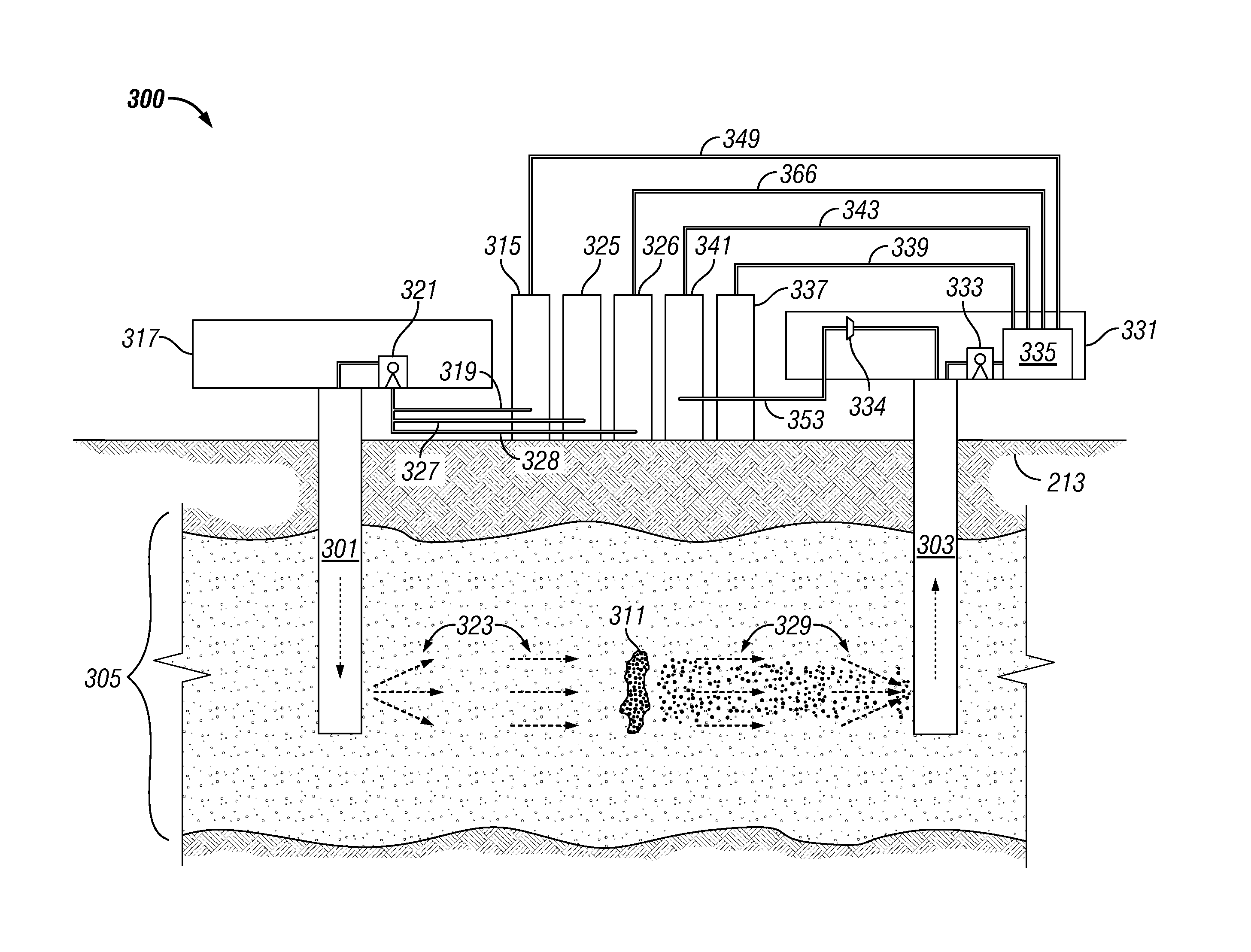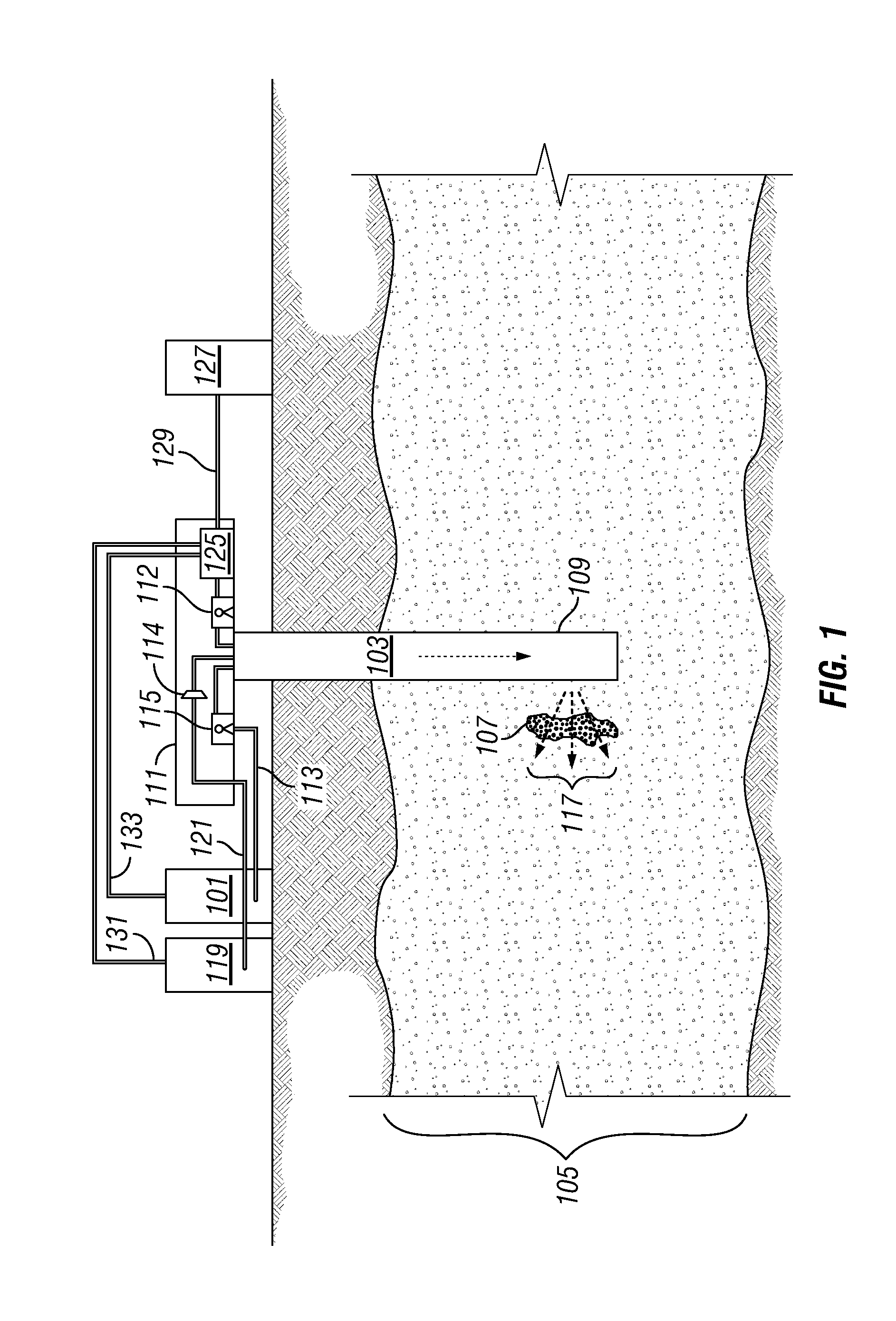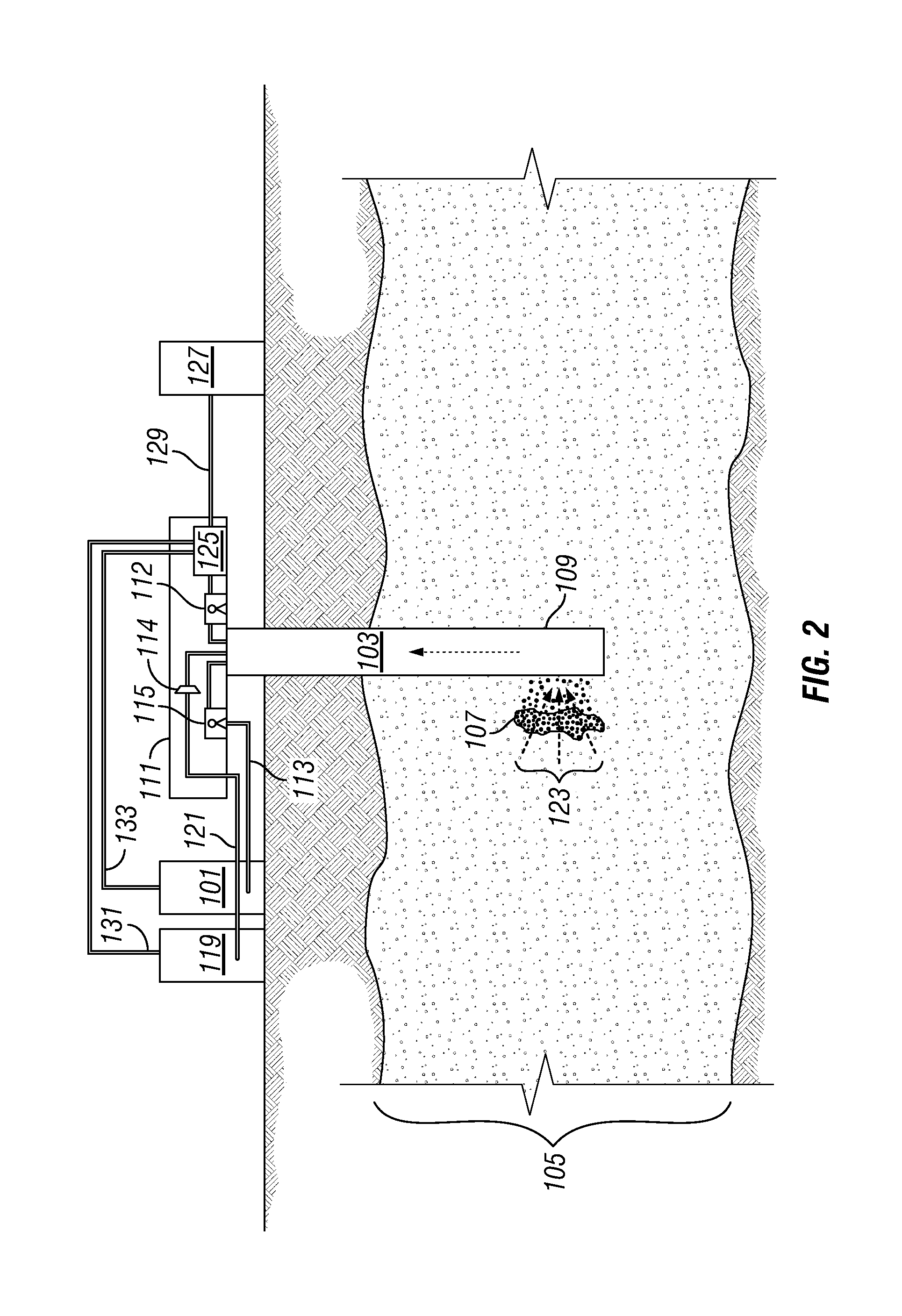Remediation of asphaltene-induced plugging of an oil-bearing formation
a technology of asphaltene and oil-bearing formations, which is applied in the direction of fluid removal, chemistry apparatus and processes, and wellbore/well accessories, etc., can solve the problems of asphaltene flocculation, aggregate, and deposit of asphaltene, and the production of oil from an oil-bearing formation may be impeded, and solvents, however, have certain disadvantages attached
- Summary
- Abstract
- Description
- Claims
- Application Information
AI Technical Summary
Benefits of technology
Problems solved by technology
Method used
Image
Examples
example 1
[0074]The quality of dimethyl sulfide as an asphaltene solvent based on the miscibility of dimethyl sulfide with a crude oil relative to other compounds was evaluated. The miscibility of dimethyl sulfide, ethyl acetate, o-xylene, carbon disulfide, chloroform, dichloromethane, tetrahydrofuran, and pentane solvents with mined oil sands was measured by extracting the oil sands with the solvents at 10° C. and at 30° C. to determine the fraction of hydrocarbons extracted from the oil sands by the solvents. The bitumen content of the mined oil sands was measured at 11 wt. % as an average of bitumen extraction yield values for solvents known to effectively extract substantially all of bitumen from oil sands—in particular chloroform, dichloromethane, o-xylene, tetrahydrofuran, and carbon disulfide. One oil sands sample per solvent per extraction temperature was prepared for extraction, where the solvents used for extraction of the oil sands samples were dimethyl sulfide, ethyl acetate, o-xy...
example 2
[0080]Two experiments were conducted on a naturally occurring tar mat material recovered from an oil-bearing formation to compare the rate of dissolution of the tar mat material using dimethyl sulfide and A150, a commercially available solvent comprised of a mixture of aromatic hydrocarbons that is commonly used to dissolve tar mats. A naturally occurring tar mat material recovered from an oil-bearing formation at a depth of 4690 meters and at a formation temperature of 50° C. was utilized as the tar mat material for the comparison.
[0081]In the first experiment, two samples of DMS solvent and two samples of A150 solvent were individually mixed with the tar mat material at ambient temperature and pressure, where the volume (ml) to weight (g) ratio of each solvent sample to the tar mat material was approximately 100:1. The length of time required to entirely dissolve the tar mat material was measured and recorded. Table 3 below shows the results.
TABLE 3Time Required for Dissolution of...
PUM
 Login to View More
Login to View More Abstract
Description
Claims
Application Information
 Login to View More
Login to View More - R&D
- Intellectual Property
- Life Sciences
- Materials
- Tech Scout
- Unparalleled Data Quality
- Higher Quality Content
- 60% Fewer Hallucinations
Browse by: Latest US Patents, China's latest patents, Technical Efficacy Thesaurus, Application Domain, Technology Topic, Popular Technical Reports.
© 2025 PatSnap. All rights reserved.Legal|Privacy policy|Modern Slavery Act Transparency Statement|Sitemap|About US| Contact US: help@patsnap.com



